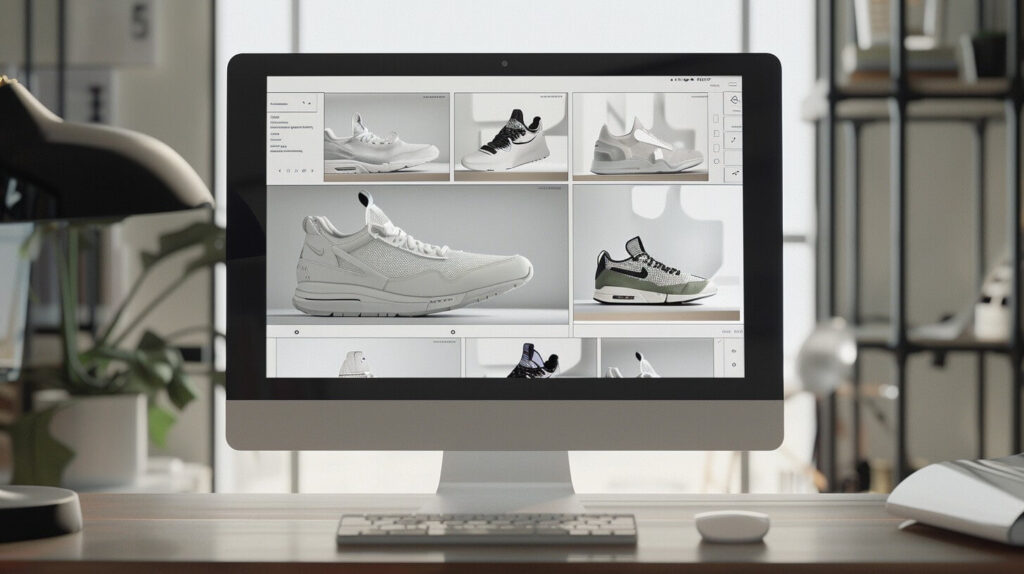How the Yes Catalogue Can Transform Your Product Listings: Best Practices and Tips

In the bustling world of e-commerce, standing out can be a challenge. Product listings that are clear, engaging, and informative play a crucial role in capturing customer attention and driving sales. This is where the YES Catalogue Tips can make a significant difference.
By leveraging its features and following best practices, you can transform your product listings into powerful tools for attracting and converting customers.
What is the Yes Catalogue?
Before we delve into how the Yes Catalogue can enhance your product listings, let’s break down what it actually is.
The Yes Catalogue is a comprehensive platform designed to streamline the creation and management of product listings.
It provides a structured framework that helps you present your products in a consistent and appealing manner.
Imagine it as a digital assistant that ensures your product information is accurate, up-to-date, and presented in a way that maximises its appeal.
From high-resolution images to detailed descriptions and optimised keywords, the Yes Catalogue covers all the bases to make your listings shine.
Common Questions and Concerns
How Can the Yes Catalogue Improve My Product Listings?
One of the primary benefits of these YES Catalogue Tips is its ability to standardise and organise your product information.
This consistency not only helps in maintaining a professional appearance but also ensures that customers receive clear and reliable information.
- Enhanced Accuracy: By using a structured template, you reduce the risk of missing crucial details or making errors in your listings.
- Increased Appeal: Consistent formatting and high-quality images make your listings more visually appealing, which can lead to higher engagement and conversions.
- Streamlined Management: The YES Catalogue Tips simplifies the process of updating and managing multiple listings, saving you time and effort.
Will Using the Yes Catalogue Be Time-Consuming?
It’s natural to wonder if adopting a new tool will require a significant time investment.
While there is a learning curve, the Yes Catalogue is designed to streamline the process rather than complicate it.
- Initial Setup: Investing time in setting up your catalogue and familiarising yourself with its features will pay off in the long run.
- Efficiency Gains: Once you’re accustomed to the system, managing and updating listings becomes quicker and more efficient, freeing up time for other important tasks.
How Do I Ensure My Listings Are Optimised for Search Engines?
Optimising your product listings for search engines is crucial for driving organic traffic.
The Yes Catalogue integrates well with SEO best practices, allowing you to enhance your listings’ visibility without compromising on quality.
- Keyword Integration: By incorporating relevant keywords into your product titles and descriptions, you can improve your listings’ search engine rankings.
- Consistent Updates: Regularly updating your listings with fresh information and optimised keywords helps maintain their relevance and search engine performance.
Best Practices for Using the Yes Catalogue
To make the most out of these YES Catalogue Tips, it’s important to follow best practices that will enhance the quality and effectiveness of your product listings.
Here’s a detailed guide on how to leverage its features for optimal results.
Craft Clear and Concise Descriptions
A well-written product description is key to informing and enticing potential customers.
The Yes Catalogue provides a structured format that helps you create clear and concise descriptions.
- Focus on Key Features: Highlight the most important features and benefits of your product. For example, if you’re selling a high-quality kitchen knife, emphasise its durability, sharpness, and ergonomic handle.
- Use Simple Language: Avoid jargon or complex terminology that might confuse customers. Aim for straightforward language that clearly communicates the product’s value.
Example:
- Before: “This blender is perfect for anyone who wants to enhance their lifestyle with a powerful kitchen appliance.”
- After: “This high-performance blender features a 1,000-watt motor and durable stainless steel blades, making it ideal for blending smoothies, soups, and sauces quickly and efficiently.”
Incorporate High-Quality Images
Visuals are a crucial part of any product listing.
The Yes Catalogue allows you to upload multiple high-resolution images, which can significantly enhance the appeal of your listings.
- Showcase Different Angles: Provide images from various angles to give customers a comprehensive view of the product. For example, show the front, side, and back of a piece of furniture.
- Highlight Key Features: Use close-up shots to highlight important details, such as stitching on a handbag or the texture of a fabric.
Tip: Include lifestyle images that show the product in use. For instance, if you’re selling a yoga mat, include images of someone using it in a serene, well-designed space.
Incorporate Keywords Naturally
Keywords play a vital role in making your product listings discoverable through search engines.
Our YES Catalogue Tips helps you integrate these keywords seamlessly into your product titles and descriptions.
- Title Optimization: Ensure your product titles are descriptive and include primary keywords. For example, “Eco-Friendly Yoga Mat for Hot Yoga and Pilates.”
- Description Integration: Sprinkle relevant keywords throughout your descriptions without overstuffing. For instance, “Our eco-friendly yoga mat is perfect for hot yoga and Pilates, providing excellent grip and support.”
Tip: Use variations of your keywords to cover different search queries. For instance, in addition to “eco-friendly yoga mat,” you might also use “sustainable yoga mat” and “recycled material yoga mat.”

Maintain Consistent Formatting
Consistency in formatting helps create a professional and organised appearance for your product listings.
The Yes Catalogue’s templates ensure that all your listings follow a uniform format.
- Use Bullet Points: Break down product features and benefits into bullet points for easy scanning. This helps customers quickly find the information they’re looking for.
- Standardise Layouts: Ensure that all your listings follow the same layout, including headings, subheadings, and text formatting.
Example:
- Title: Premium Ergonomic Office Chair
- Features:
- Adjustable height
- Lumbar support
- Reclining backrest
- Benefits:
- Reduces back pain
- Enhances productivity
- Provides comfort during long hours
Update Listings Regularly
Keeping your product listings up-to-date is essential for maintaining their relevance and accuracy.
The Yes Catalogue simplifies the process of updating multiple listings at once.
- Monitor Inventory: Regularly check your inventory levels and update product availability on your listings.
- Revise Information: If there are any changes to product features, pricing, or promotions, make sure to update your listings accordingly.
Tip: Set a schedule for reviewing and updating your listings, such as monthly or quarterly, to ensure that all information remains current.
Conclusion
Transforming your product listings with the Yes Catalogue is more than just a matter of improving aesthetics—it’s about enhancing the overall effectiveness of your e-commerce strategy.
By leveraging Yes Catalogue’s structured framework, you can create product listings that are not only visually appealing but also optimised for search engines and user engagement.
From crafting clear, concise descriptions to incorporating high-quality images and maintaining consistent formatting, each step plays a crucial role in making your products stand out.
The integration of relevant keywords ensures that your listings are easily discoverable by potential customers, while regular updates keep your information accurate and engaging.
Remember, these YES Catalogue Tips is not just a tool but a partner in your journey toward e-commerce success.
It provides you with the means to present your products in the best possible light, streamline your listing management, and ultimately drive more sales.
As you implement these best practices, don’t forget to engage with your audience through thoughtful interactions and updates.
Encouraging feedback and fostering a sense of community can further enhance your listings’ effectiveness and build lasting customer relationships.
Incorporate these strategies and watch as your product listings transform into powerful, compelling showcases that capture attention, drive traffic, and boost conversions.
With the Yes Catalogue by your side, you’re well-equipped to take your e-commerce efforts to new heights.
Frequently Asked Questions
What is the Yes Catalogue and how can it benefit my business?
The Yes Catalogue is a leading UK catalogue that allows businesses to list and sell products to a wide customer base.
It offers £500 credit and flexible payment options to customers, making your products more accessible.
By listing on Yes Catalogue, you can potentially reach new customers and increase sales by tapping into their established audience.
How do I get started with listing my products on Yes Catalogue?
Getting started with Yes Catalogue is straightforward. You simply need to register by entering your basic details and completing an affordability form.
Once approved, you can begin listing your desired products.
It’s recommended to have high-quality product images, accurate descriptions, and competitive pricing ready before you start listing.
What are some best practices for optimising my product listings on Yes Catalogue?
While specific details for Yes Catalogue aren’t provided, general best practices for product catalogues include:
- Providing accurate and complete product information
- Using high-quality images to showcase your products
- Organising products into logical categories
- Ensuring product links are correct and functional
- Regularly monitoring and updating your listings
How can I make my products stand out among other listings?
To make your products stand out:
- Use clear, high-quality images that highlight key features
- Write compelling and informative product descriptions
- Offer competitive pricing or unique selling points
- Regularly update your listings to keep them fresh and relevant
- Consider using any available promotional features offered by the platform
How can I track the performance of my listings on Yes Catalogue?
While specific tracking tools for Yes Catalogue aren’t mentioned, it’s generally important to:
- Monitor your sales and inquiries regularly
- Pay attention to which products are performing well and which aren’t
- Use any analytics tools provided by the platform to gain insights
- Adjust your listings based on performance data to improve results
Remember, consistently reviewing and optimising your listings based on performance data is key to long-term success on any product catalogue platform.